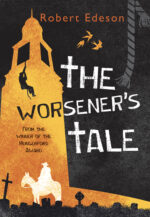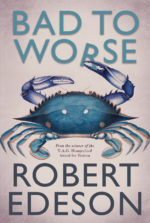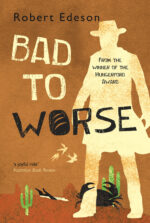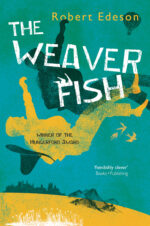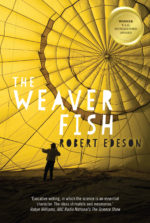Unlock centuries-old secrets in Edeson’s new crime novel set in Canterbury
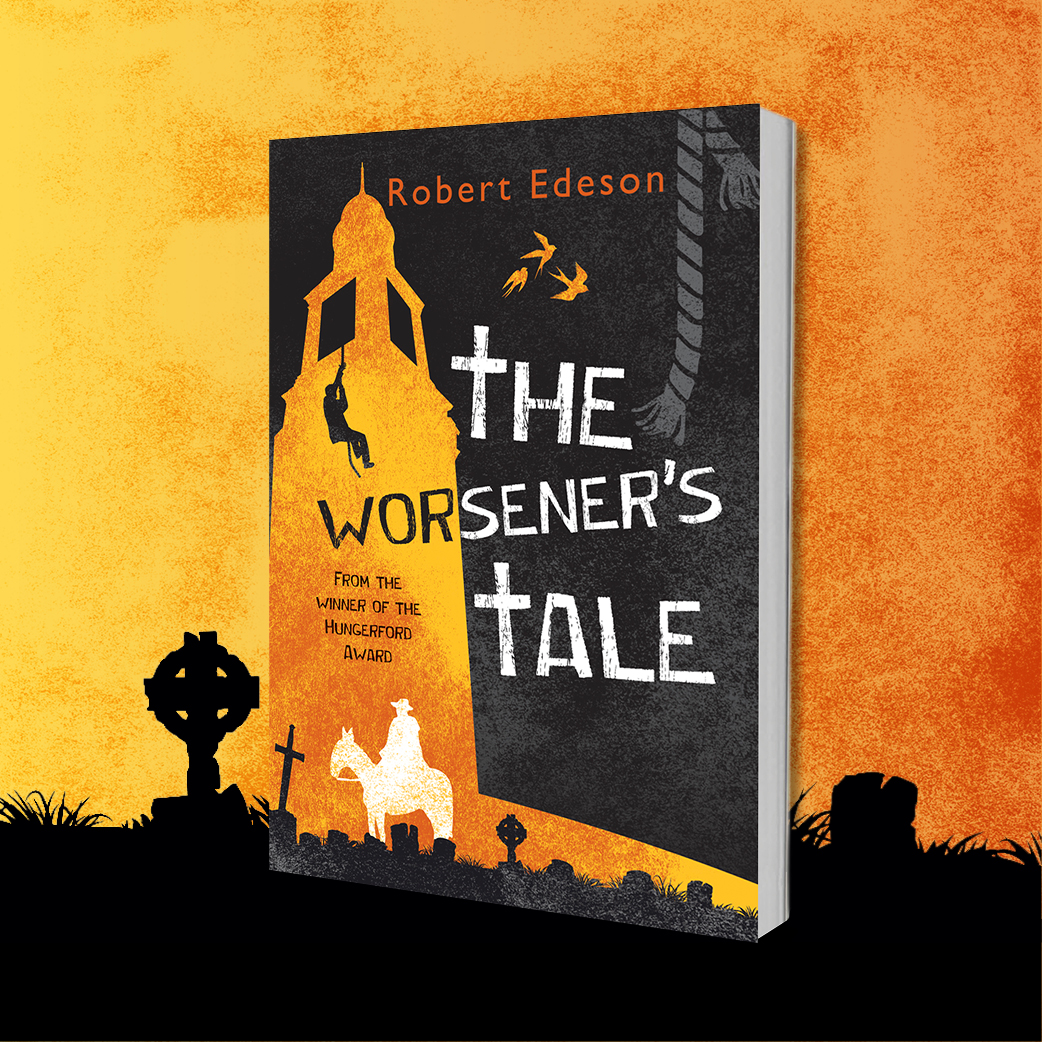
When Robert Edeson needs facts, he often makes them up. Edeson says, ‘In my view, that’s the sublime (and subversive) prerogative of a fiction writer. It is also strangely liberating after an obediently truthful life in science.’
Formerly a consultant anaesthetist and researcher, publishing in neuroscience, biophysical and mathematical literatures, nonetheless Edeson had to study Middle English and medieval history in order to write what we’re calling this year’s most intriguing crime novel. In this post, Edeson takes us into the strange and wonderful world of The Worsener’s Tale.
Tell us about your book.
In 1369, in the village of Stēpel Raest near Canterbury, a group of pilgrims settles into lodgings for the final night before their procession to Thomas Becket’s shrine. During the evening, they are entertained by a Knight Worsener within their company, who relates an exotic and fantastical Tale of a papal mission to an island in what we now identify as the Ferendes—then unknown to the Western world. They retire for the night, but on the following morning an act of unspeakable evil is discovered in the parish church of St Eke’s. These events, including the Tale, were recorded for posterity by Henry Oldrice, a fellow pilgrim, in his poetic masterpiece Th Pylgrymes Wey.
Six-and-a-half centuries later, in the modern village of Steeple Resting, and in the very same tower room within the church, local historian William Whencely is found dead in circumstances eerily reminiscent of the mediaeval crime. On the same night, his close friend, Philip Misgivingston, is lucky to survive when his vehicle is forced off the road.
Police intelligence analyst Richard Worse accompanies his partner Millie Misgivingston to Kent to investigate the attack on her father. Further incidents follow, all centred on that Norman bell tower. Suddenly no one, it seems, including Millie, is safe at St Eke’s. But Worse, assisted by Millie, Philip, and a critical reading of the Oldrice text, methodically uncovers a shocking secret concealed in the ancient church, and brings to justice a vestigial and corrupted mediaeval Order charged with protecting it.
Which of your characters do you most relate to and why?
Richard Worse, a man of impeccable ruthlessness in the cause of public good. Although Worse is an action hero, and I am not, he reveals an insightful, philosophical, and often wry internal world. Of course, it is this interiority that we cannot fully know in another individual, which makes it an intriguing, uncertain, and sometimes dangerously attractive quality of people we encounter in life.
How do you celebrate when you finish your book?
Actually, it is not easy to know when to celebrate the finish, because it is difficult to recognize, or even define it. The finish is certainly not in a flourishing, final full stop. It is not when submitting to the publisher. Nor is it on being informed of acceptance (though that is obviously a cause for celebration), because a maturation time and the editorial process remain. Even up to the point of sign-off to the printer, the manuscript remains a working document as possible improvements, amendments, and additions come to mind. Probably, emotionally, the finish is when you are handed your first copy of the printed volume. That’s when a kind of exhaustion comes into focus, and leaves.
Anyway, I’ve never been one for ebullience when it comes to celebration, though in privacy the joy is no less. I recall that last time, after collecting my special author’s pre-release copy of Bad to Worse, I sat alone in a quiet Fremantle café with the book perched upright on the table before me—rather like a miniature monument—as I sipped coffee, thinking about the occasion. For me, that was a celebration, of sorts. Then I walked to the train station.
Returning to the subject of a book’s completion, and an author’s acceptance of finality, I think the psychological marker is when one’s creative preoccupations shift irresistibly to the next project.
What are three things that we would always find on your desk?
On my desk will be found a MacBook Air, a 1970’s anglepoise light (twice rewired), and an orange Wuthering Heights china mug (cf. page 228 of The Worsener’s Tale). I do almost no work on paper. The thing is, though, I myself am not always at that desk. I work around the house according to natural light, relevant bookshelves, comfort, and other goings-on, in which case the computer and tea mug follow.
Tell us something about you that may not appear in your author bio?
When I was eleven or twelve years old, around the start of the Space Age, I built a two-stage rocket and launched it from our back yard. The living payload was an unsuspecting garden beetle protected—comfortably, I was sure—in a small, pressed-steel capsule lined with cotton wool and equipped with a parachute fashioned from a handkerchief.
Countdown and lift-off proceeded perfectly. Unfortunately, there occurred an unexpected delay between flame-out of the first stage and ignition of the second, by which time the assembly had reached its apogee and was pointing down at about forty-five degrees. In consequence, it accelerated earthwards under full thrust, heading missile-like straight toward a neighbour’s tiled roof. I instantly regretted not investing enough thought in re-entry scenarios.
To my huge relief, it shrieked just clear of her roof gable and out of sight. I ran around the block to survey any damage and recover wreckage. It had landed on her street verge still burning propellant, causing a large, incriminating black scar of charred, smoking grass. As I arrived, the distressed neighbour burst from her front door asking what the terrifying overhead noise had been. To my shame, I pretended ignorance, recovered the evidence, and raced home. She was never to know that her house had been centimetres from exploding above her. Let this serve as my solemn confession and deepest apology to her surely now-departed soul.
The heroic astronaut, quite unharmed by its beetle G-force experience, was returned to an unadventurous retirement in our garden. I apologise to it as well.
The Worsener’s Tale is available in all good bookstores and online.



